The counterterrorism manual doesn’t cover an insurrection egged on by one party’s leaders, but certain lessons can still be learned from years of evolving counterterrorism policies, writes Daniel L. Byman. This piece first appeared in the Washington Post.
Some 20,000 National Guardsmen may be on hand to secure Washington for next week’s inauguration. But for police and security officials — and the incoming Biden administration — last week’s mob assault on the U.S. Capitol and the risk of continued violence from those protesting the 2020 election results raise difficult questions.
There is some debate about whether what happened on Jan. 6 should be called “terrorism,” though many Democrats and some Republicans were quick to use the label. A new Washington Post report suggest dozens of people on the FBI’s terrorist watch list headed to Washington, D.C., that day.
So what does almost 20 years of U.S. counterterrorism experience since 9/11 tell us? Here are some insights.
1. Is there a new terror threat?
Unlike al-Qaida, ISIS or white supremacists like the shooter who murdered 23 people in 2019 when he targeted the Hispanic community at an El Paso Walmart, those who stormed the U.S. Capitol were not seeking to kill large numbers of random civilians. Rather, they sought to overturn the election results, with some apparently seeking to kill or at least intimidate supposed enemies of President Trump like Vice President Pence and House Speaker Nancy Pelosi (D-Calif.).
The marchers were a mix of the ordinary, the enraged and the bizarre rather than a united movement. In addition to ubiquitous Trump flags, some protesters wore Crusader crosses to show off their white supremacist beliefs. Others had the Roman numeral III in place of the stars of an American flag, referencing the (false) belief that only 3 percent of Americans fought in the Revolutionary War and thus a vanguard is necessary to, again, liberate America. And, of course, the world of QAnon was everywhere.
Complicating any threat analysis, political leaders — including, notably, the president — incited the Jan. 6 violence using speeches and social media to call for action, but did not control the mob. The president’s supporters also used social media platforms ranging from Facebook to more obscure ones like Gab and Parler to coordinate their activities. However, there does not appear to be any top-down direction.
2. What can we learn from past counterterrorism efforts?
There’s no one solution, of course, but it’s useful to think of the “Swiss cheese” model for fighting the spread of infectious diseases like covid-19 — all interventions have holes but can be far more effective when layered together.
This approach applies to counterterrorism as well. When the FBI has full authorization and resources, it can devastate potential threats at home. In the 1960s, the FBI used a tough mix of law enforcement and covert action to crush Ku Klux Klan and other white supremacist groups. After 9/11, an aggressive FBI campaign helped keep Islamist militant attacks in the United States low, though some experts contend there was little threat to begin with. In the immediate aftermath of the Capitol assault, the FBI has opened at least 170 case files, with more sure to come.
Global efforts also can pay off. Some U.S. extremist networks have connections overseas, and countries like Russia try to exploit this. Working with allies can hinder individuals who try to go to Ukraine and other places for training and combat experience. And designating foreign white supremacist organizations as terrorist groups then criminalizes Americans who support these groups.
Social media companies also play an important role. After years of operating freely, ISIS was largely removed from major platforms like Facebook and chased from more minor ones, making it harder for the group to recruit and coordinate. Social media companies, however, were far more tolerant of U.S. white supremacist and anti-government activity, in part because they feared a political backlash.
In the aftermath of the Jan. 6 violence, major tech companies deplatformed President Trump and made it harder to access Parler and other platforms embraced by extremists. If the companies keep this pressure up, domestic extremists will find it harder to reach large audiences.
3. But many Americans apparently believe Trump’s lies about the election
Here’s the big difference, in 2021. In contrast to ISIS attacks in America, many of those who assaulted the U.S. Capitol are part of a large and open movement that includes numerous peaceful Trump supporters as well as a range of violent groups. Many of those who participated in the violence are at risk of arrest or at least losing their jobs because of their open activity on social media.
This mob enjoyed significant public support. Polls taken shortly after the Capitol assault suggest 45 percent of Republicans favored the attack. Because of their false beliefs about a stolen election, nearly half of Republicans surveyed in a new VOX/DFP poll said they don’t believe Biden should be inaugurated. One study of right-wing violence in Europe found that violence was more common when people felt peaceful politics was thwarted, as many Trump supporters feel today.
This overlap with a broader community may mean that a crackdown risks further social polarization. After 9/11, for instance, the roundup of many innocent Muslims angered many in the community. This did not lead to an increase in anti-Americanism — but it did increase concerns within the Muslim community about their place in America.
The broader community of Trump supporters is simply much larger. However baseless the claims of election fraud, alienation of a group this large will have consequences.
An added concern is the extent to which people willing to lay siege to the U.S. government may be well-armed, or military trained — in contrast to the frequent incompetence of many American jihadis. Indeed, as the selfies with members of the Capitol Police indicate, some members of law enforcement are sympathetic to the movement, and some police officers who allegedly breached the Capitol have been arrested.
Better policies can reduce the risk of violence and its scope should it occur, but the election fraud myths embraced by many Republican leaders and media outlets remain a broader underlying issue. Tackling this challenge is a tall order given the polarization in America. Biden campaigned on unity, however, and the events at the Capitol may give more sensible Republicans pause about how much to fan the flames.
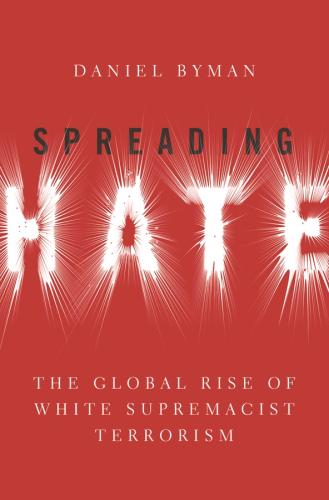
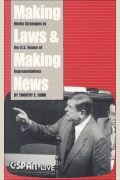
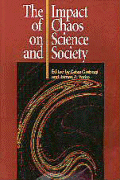
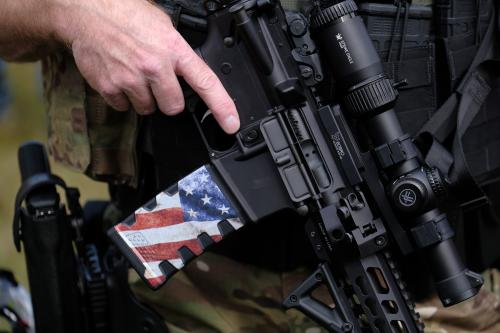
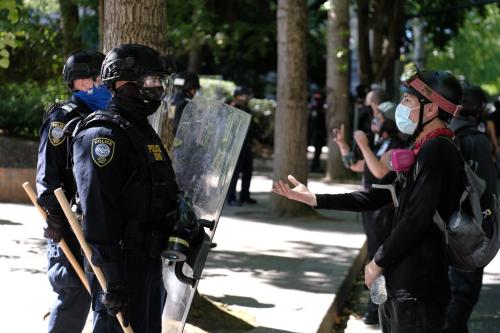
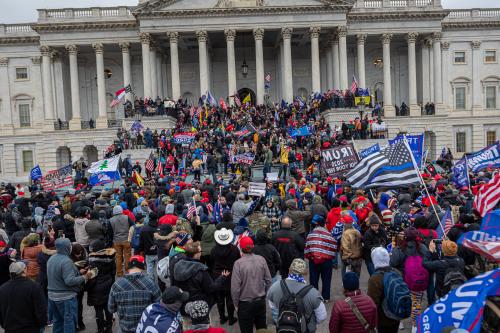

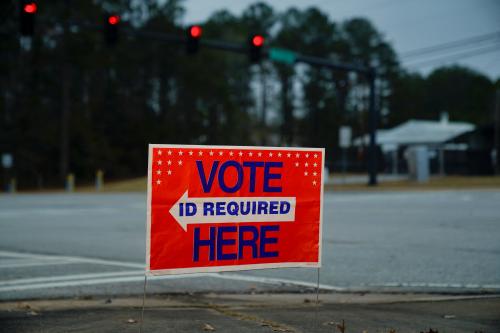
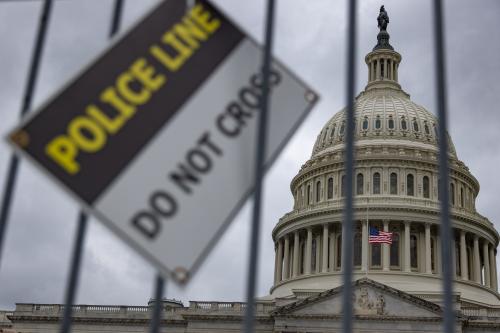
Commentary
The assault on the US Capitol opens a new chapter in domestic terrorism
January 19, 2021